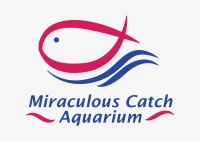

Product Details
Bleeding Heart Tetra
The Bleeding Heart Tetra (Hyphessobrycon erythrostigma) is a striking freshwater species named for the vivid, heart-shaped red mark on its body. This unique feature, combined with shimmering silver scales and graceful fins, makes it a popular choice among aquarists.
-
Native to slow-moving rivers and streams of South America, particularly in the Upper Amazon Basin, Bleeding Heart Tetras thrive in well-planted aquariums that mimic their natural habitat.
-
Appearance & Behavior:
-
Easily recognized by the distinctive red “heart” spot located just behind the gill plate.
-
Males typically display elongated dorsal fins with a flowing, black-tipped edge, while females are slightly rounder with shorter fins.
-
Peaceful in nature, but best kept in groups of at least 6–8 individuals to reduce stress and encourage natural schooling behavior.
-
Their gentle temperament makes them excellent candidates for community aquariums.
-
-
Water Conditions:
-
Temperature: 72–80°F (22–27°C)
-
pH: 6.0–7.5 (slightly acidic to neutral)
-
Hardness: 2–15 dGH
-
Bleeding Heart Tetras prefer soft, tannin-rich water similar to Amazonian streams. Adding driftwood and dried leaves can help recreate these conditions while providing a natural look.
-
A gentle water flow with plenty of live plants and hiding spots creates a stress-free environment.
-
-
Tank Setup:
-
Minimum tank size: 30 gallons (to allow free swimming space for schools).
-
Substrate: Fine sand or smooth gravel enhances their natural display.
-
Plants: Amazon sword plants, Java fern, and floating plants provide cover and a natural environment.
-
Lighting: Moderate lighting with shaded areas helps replicate their natural dimly lit waters.
-
-
Tank Mates:
-
Excellent for peaceful community setups.
-
Compatible with other non-aggressive species such as:
-
Neon Tetras, Cardinal Tetras, Rummy Nose Tetras
-
Corydoras Catfish
-
Dwarf Gouramis
-
Peaceful Rasboras and Livebearers
-
-
Avoid housing with large or aggressive fish like cichlids that may bully or eat them.
-
-
Feeding Habits:
-
Naturally omnivorous and not picky eaters.
-
Ideal diet includes a mix of high-quality flake food, micro pellets, frozen or live foods such as daphnia, brine shrimp, and bloodworms.
-
Supplement with occasional vegetable-based flakes or blanched vegetables for balanced nutrition.
-
Feed small amounts 2–3 times daily, ensuring they consume all food within a few minutes to avoid water pollution.
-
-
Care Level:
-
Rated as easy to moderate to care for, making them suitable for beginner and intermediate aquarists.
-
Regular water changes (25–30% weekly) are crucial to maintain water quality.
-
Stable water conditions are essential—sudden shifts in pH or temperature can stress the fish.
-
Monitor schooling behavior: a healthy group will actively swim together, showing vibrant coloration.
-
-
Breeding Information:
-
Breeding in captivity is possible but requires a separate breeding tank with slightly acidic, soft water.
-
Females scatter eggs among plants, and males fertilize them externally.
-
Eggs typically hatch in 1–2 days, but adults may eat the eggs, so separating them after spawning is recommended.
-
-
Why Choose the Bleeding Heart Tetra:
-
Adds eye-catching beauty with its distinctive red heart-shaped mark.
-
Peaceful schooling behavior creates dynamic movement in aquariums.
-
Adaptable to community tanks, blending well with other friendly fish.
-
A hardy species with relatively simple care requirements compared to other tropical fish.
-
✨ The Bleeding Heart Tetra is more than just a pretty fish—it’s a symbol of vibrancy and harmony for any freshwater aquarium. With the right care, these tetras can live up to 5 years, providing long-lasting beauty and peaceful companionship to your aquatic community.
Bleeding Heart Tetra
Product Options
1
Delivery
Quantity
 Miraculous Catch Aquarium Buona Vista
Miraculous Catch Aquarium Buona Vista Aquarium Fishes, Tanks & Supplies From Miraculous Catch Aquarium Buona Vista


 SG
SG



